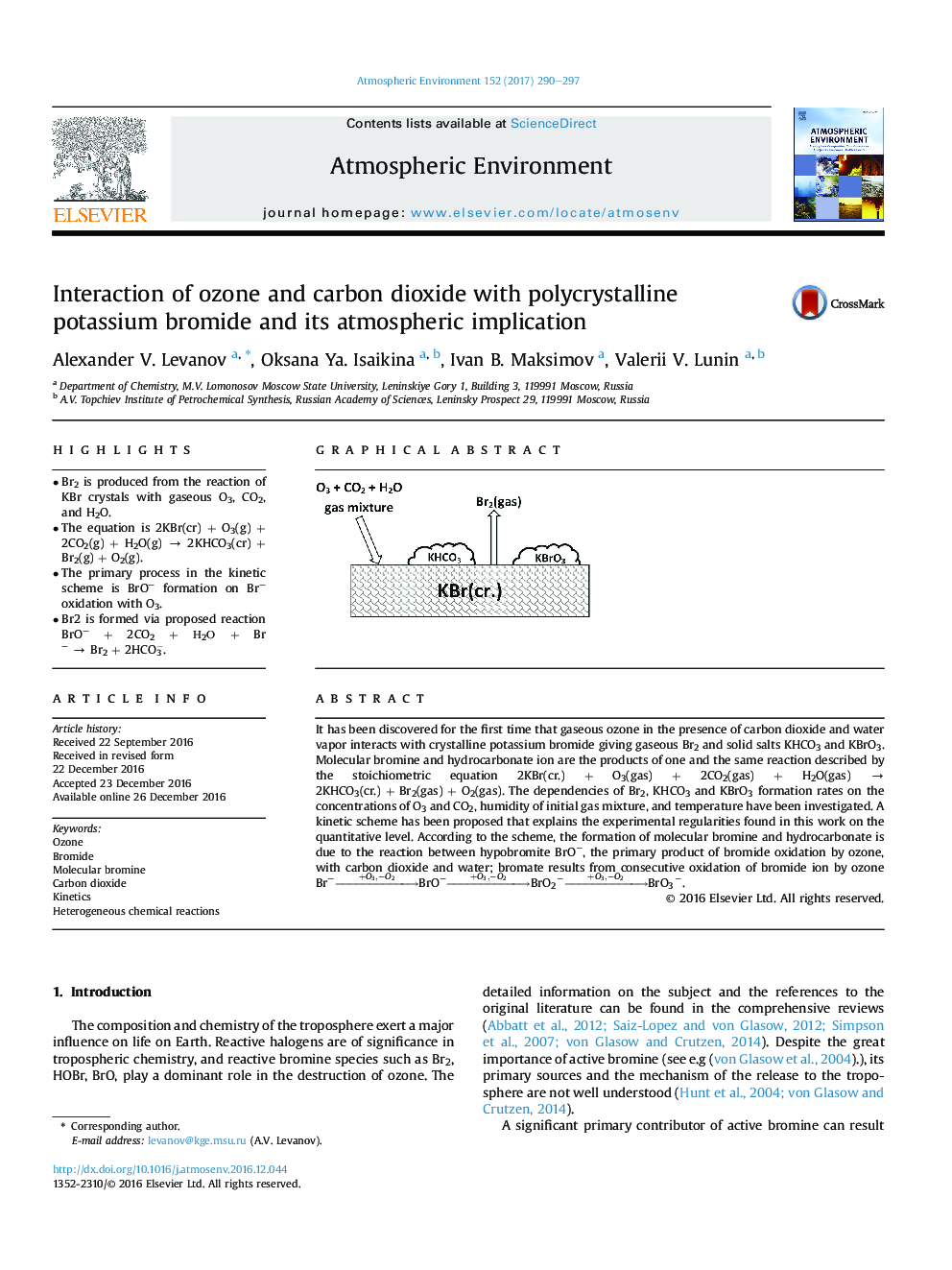| Article ID | Journal | Published Year | Pages | File Type |
|---|---|---|---|---|
| 5753407 | Atmospheric Environment | 2017 | 8 Pages |
â¢Br2 is produced from the reaction of KBr crystals with gaseous O3, CO2, and H2O.â¢The equation is 2KBr(cr) + O3(g) + 2CO2(g) + H2O(g) â 2KHCO3(cr) + Br2(g) + O2(g).â¢The primary process in the kinetic scheme is BrO- formation on Br- oxidation with O3.â¢Br2 is formed via proposed reaction BrO- + 2CO2 + Ð2Р+ Br- â Br2 + 2HCO3â.
It has been discovered for the first time that gaseous ozone in the presence of carbon dioxide and water vapor interacts with crystalline potassium bromide giving gaseous Br2 and solid salts KHCO3 and KBrO3. Molecular bromine and hydrocarbonate ion are the products of one and the same reaction described by the stoichiometric equation 2KBr(cr.)Â +Â O3(gas)Â +Â 2CO2(gas)Â +Â H2O(gas) â 2KHCO3(cr.)Â +Â Br2(gas)Â +Â O2(gas). The dependencies of Br2, KHCO3 and KBrO3 formation rates on the concentrations of O3 and CO2, humidity of initial gas mixture, and temperature have been investigated. A kinetic scheme has been proposed that explains the experimental regularities found in this work on the quantitative level. According to the scheme, the formation of molecular bromine and hydrocarbonate is due to the reaction between hypobromite BrOâ, the primary product of bromide oxidation by ozone, with carbon dioxide and water; bromate results from consecutive oxidation of bromide ion by ozone Brââ+O3,âO2BrOââ+O3,âO2BrO2ââ+O3,âO2BrO3â.
Graphical abstractDownload high-res image (240KB)Download full-size image
